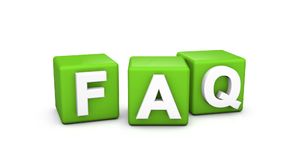Frequently Asked Questions on African Development Bank
Component 1
• A mini grid is an integrated local generation and distribution system capable of serving at least 2 end‐users independently from the national grid
- • A competitive tender based on a minimum subsidy requirement ($/end user) for 300 sites across eight states. The Tender will be implemented in two phases.
- • The first phase will consist of 99 sites packaged into three lots. The remaining 201 sites will be tendered in the second phase.
• The subsidy covers the developer’s capital expenditure requirement to develop the mini-grid.
• The Minimum Subsidy Tender will be given to the qualified proponent with the least capital requirement to develop the mini-grid.
• The first phase covers 99 sites across three states: Kwara Oyo, and Nasarawa states.
• In the second phase, the tender will cover 201 sites across the following 9 states within the 6 geopolitical zones namely Kwara Oyo, and Nasarawa Jigawa, Enugu, Gombe, Kogi, Delta, and Ekiti states respectively.
• Local and international mini-grid developers that meet the application criteria for the Minimum Subsidy Tender (see Technical Annex)
• Innovative web-based platform that will be used for managing data for the mini grid tender and productive use appliances
• The 8 states are divided into 8 lots, each state is one lot.
• Developers can bid for a maximum of 2 lots.
• The sites within each state are grouped into a single lot and these vary from state to state.
• The subsidy will be disbursed after the NEP appointed Independent Verification Agent certifies that the Developer has two end users receiving electricity from the mini-grid
Component 2
• Appliances and equipment that utilize minimum energy to complete their required task (s).
- • In Rural Communities, the main source of business activity is agriculture processing. Therefore, end-users use grain millers, rice processing equipment and other processing appliances.
- • Other commonly used appliances are driers, freezers and sewing machines
• This is a subsidy that is applied after a pre-determined result has been met
• Disbursement will be made only upon verification that the agreed-upon results have been delivered
• The PMU, independent verification agent and grant administrator will verify claims after 3 months of installation
• No, the scheme intends to support the incremental costs that companies incur when supplying productive use appliances, namely: transportation, marketing, end-user financing, installation, end-user training, repairs, replacements and overall support
• Phase 1 will involve existing mini-grids and Phase 2 will expand the reach to 8 states under the Nigeria Electrification Project; Enugu, Oyo, Kogi, Kwara, Nasarawa, Gombe, Jigawa and Delta.
• These subsidies will be provided to energy access companies, which include mini-grid developers, stand-alone solar companies, agricultural off-takers, cooperatives and other companies who wish to get involved in the market for productive use appliances
Component 3
• The EEP is a Federal Government of Nigeria initiative, which is tasked with improving the quality of educational services at tertiary level through the provision of dedicated and independent power plants, which will provide reliable, affordable and sustainable power to 37 Federal and 7 affiliated teaching hospitals. In addition, EEP will provide street lighting for illumination and safety, as well as a world-class renewable energy-training centre at each of the EEP beneficiary institutions. The renewable energy training centres will give the students the opportunity to put their theoretical knowledge into practice.
• Furthermore, the EEP is committed to empowering young women and fostering gender inclusion in the power sector. In line with this, selected female students across each university will be afforded the opportunity to receive comprehensive training during the construction phase of the project, under the EEP Science, Technology, Engineering and Mathematics (STEM) Female Internship Programme.
• EEP is being implemented in phases. EEP Phase III is being funded by the African Development Bank (AfDB) and will cover 8 Federal universities, across Nigeria’s six geopolitical zones and will utilize a combination of solar and gas-powered systems.
- • The key targets for EEP Phase III are university students, academic and non-academic staff, and enterprises located within the university campus parameters
• Modibbo Adama University of Technology, Adamawa; Federal University of Dutsin-Ma, Katsina; Federal University of Lafia, Nasarawa; Federal University of Lokoja, Kogi; Federal University of Technology Owerri, Imo; University of Port Harcourt, Rivers; Federal University of Uyo, Akwa Ibom; Federal University of Technology Akure, Ondo.
Component 4
• Institutional Capacity Building activities on NEP-AfDB focus on supporting project implementation and broad capacity building in the off grid sector. This component will finance project implementation as well as help build a robust framework for rural electrification.
- • The fourth component of the project will build a sustainable framework for rural electrification upscaling, support the implementation of the Project, and provide for broad capacity building among key stakeholders in the off-grid sector
• Federal Ministry of Power (FMP), REA, other public institutions within and in conjunction with the energy sector and the NEP-AfDB PMU


